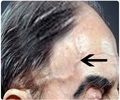According to a study, among patients with suspected or known coronary artery disease, use of a specific method demonstrated improved diagnostic accuracy.

In contrast, fractional flow reserve (FFR) is a physiologic measure of coronary stenosis expressing the amount of coronary flow still attainable despite the presence of a stenosis, but it requires an invasive procedure. Noninvasive FFR computed from CT (FFRCT) is a novel method for determining the physiologic significance of coronary artery disease (CAD), but its ability to identify ischemia has not been adequately examined to date, they said.
James K. Min, M.D., of the Cedars-Sinai Heart Institute, Los Angeles, and colleagues conducted a study to evaluate the performance of noninvasive FFRCT compared with an invasive FFR reference standard for diagnosis of ischemia.
The study included 252 patients with suspected or known CAD from 17 centers in 5 countries who underwent CT, invasive coronary angiography (ICA), FFR, and FFRCT between October 2010 and October 2011.
About 77 percent of patients had experienced angina within the last month. Ischemia was defined by certain criteria. Anatomically obstructive CAD was defined by a stenosis of 50 percent or larger on CT and ICA. Among 615 study vessels, 271 had less than 30 percent stenosis and 101 had at least 90 percent stenosis.
Among study participants, 137 had an abnormal FFR as determined by ICA. The researchers found that the diagnostic accuracy for FFRCT plus CT was 73 percent, which did not meet a prespecified primary end point for accuracy (as pre-specified based on the lower limit of a calculated 95 percent confidence interval). By comparison, diagnostic accuracy of CT alone for detecting coronary lesions with stenosis of 50 percent or greater, was 64 percent. When comparing FFRCT alone with CT alone for detecting these lesions, FFRCT demonstrated superior discrimination.
Advertisement
They noted that the sensitivity and negative predictive value of FFRCT were high, indicating a low rate of false-negative studies.
Advertisement
"Taken together, these study results suggest the potential of FFRCT as a promising noninvasive method for identification of individuals with ischemia," they added.
The study is being published online by JAMA.
Source-ANI













